Slow Looking And Soil’s Hustle Bustle
I just learnt a new word reading a scientific study: Slow Looking. Did you ever look slower than usual?

Well, I love my slow cooker for soups, I can practise slow walking (have you ever pinched your sciatic nerve?), and heard of slow food (not necessarily from the slow cooker). Some people call my “wild embroidery” slow stitching to emphasise that it could replace chanting or a spiritual session, even though I do it during my volunteer work at the museum, where I have to concentrate on visitors' questions. My curiosity aroused, I searched for the buzzword instead of telling you something about woodlice. (I call that slow writing).
Those scientists (Öffnet in neuem Fenster) called their method “Slow Looking” because they used only their eyes and cameras but no traps for finding insects. And that despite the fact that they needed quite fast shutter speeds when taking photographs! With that buzzword, I buzzed through search engine links … and found a book about slow looking at walls (I recommend it for every prison library), or a “study” about learning self-compassion by looking not too fast. You can get trainings to watch stuff for longer than 5 minutes (try it and you will me pay for 30 min!). And of course, if you are a person with sight, you should better connect your breathing sessions with slow looking than slow munching.
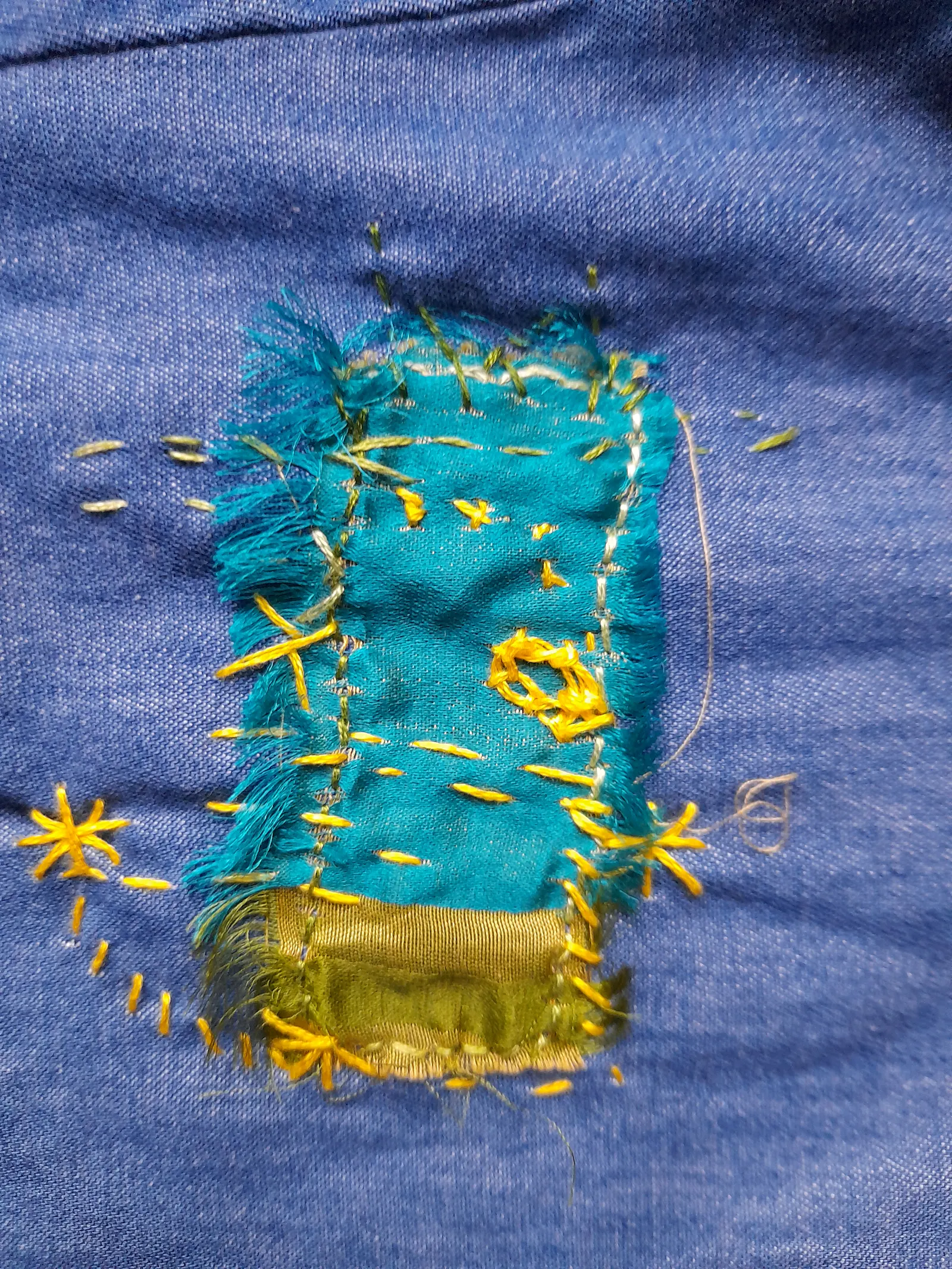
Museums And Galleries
All joking aside, I found what I was looking for: the origin. I was surprised that the buzzword comes from museum work. Volunteering as a museum guide, I had never actively given any thought to the fact that I don't like to present groups with an infodump, but rather like to present favourite pieces whose story I can tell or whose appearance challenges people.
How long do you watch one item in a crowded gallery? It’s an average of … eight seconds! Yes, you see the object, but what do you perceive? How much sensory input does your brain receive? What can you remember when I ask about the colour, the texture, a small inscription at the bottom? Are you also annoyed by museum guides who rush their groups through the rooms and don't allow time to linger and admire an object? Did you ever watch children being absorbed by an unknown item and wished to experience the same? Then you're ready for slow looking.
The technique is as old as humanity itself: cave paintings required a great deal of slow looking at pigments, the painting process and, above all, the animals that were to be depicted. It is as young as children: Watch an ant running in the garden and forget everything else. Artist Georgia O’Keeffe (Öffnet in neuem Fenster) once said: “...to see takes time, like to have a friend takes time.” Perhaps we have simply lost track of taking time?
Therefore, especially the Tate Gallery established the word with their famous guide for slow looking (Öffnet in neuem Fenster). You’ll see, it’s something for being comfortable, something for your feelings, and nourishment in dark times. And it can be a start to share your impressions with others. More guides for slow looking popped up during the lockdowns, and nowadays galleries even plan special exhibitions like the one in the National Gallery in London with only three pictures: Hockney and Piero: A Longer Look (Öffnet in neuem Fenster). Some other guides:
What is Slow Looking? (and How Can I Get Started?) (Öffnet in neuem Fenster)
Try Slow Looking with 9 Guided Activities In A Museum (Öffnet in neuem Fenster)
Looking At Soil Life
Perhaps you remember the story behind my podcast (Öffnet in neuem Fenster): As a child, I loved to watch all the small aliens under a rock in a dry stone wall. On Mastodon (Öffnet in neuem Fenster), I share my watchings in nature spontaneously … and I should show them more often here! Let’s start how you can do it yourself - and it’s great for children. For watching soil life, a very small place is enough: a moss cushion in a city, the compost heap in your garden, or a window box. The latter is great for taking photos.
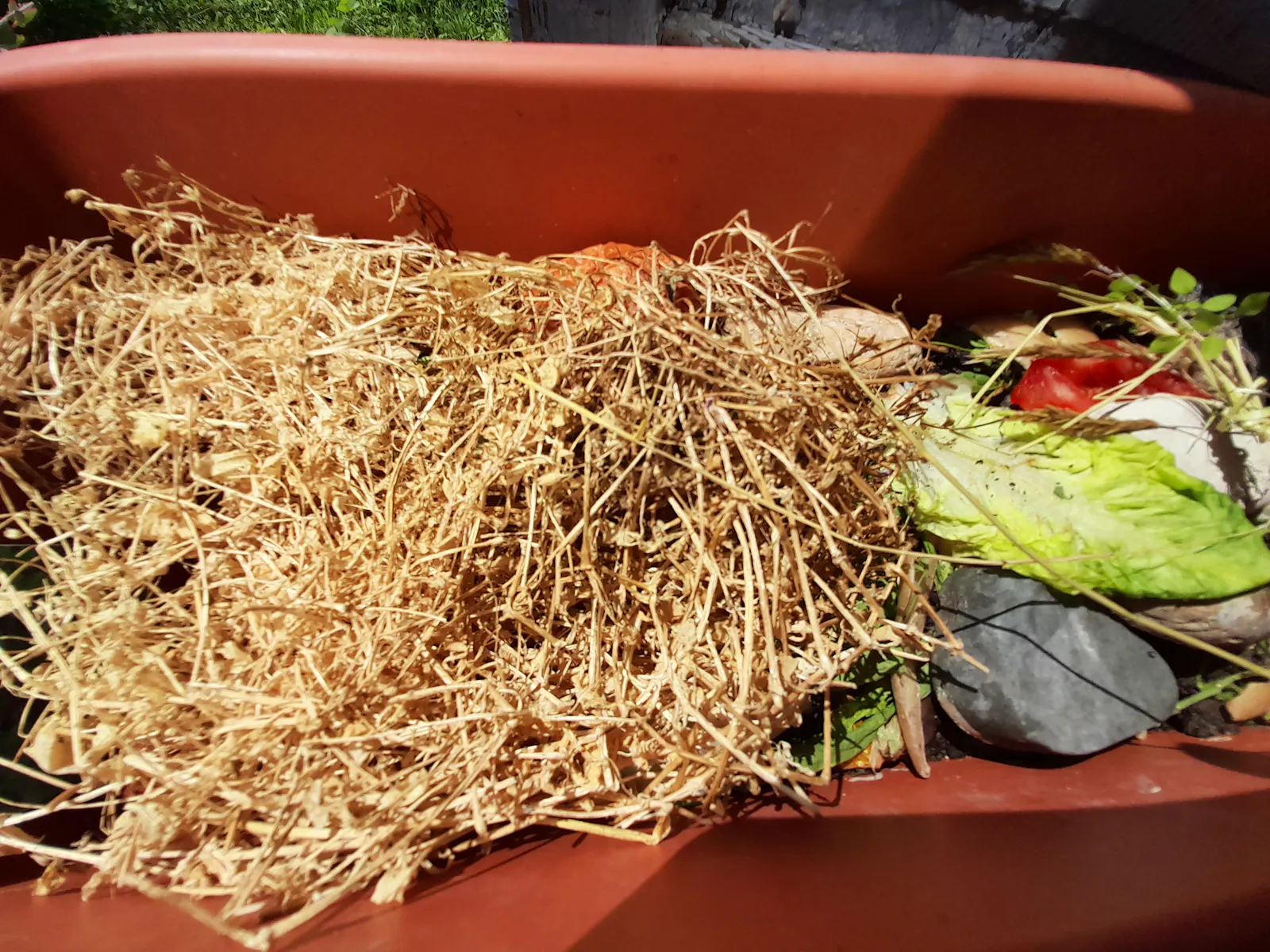
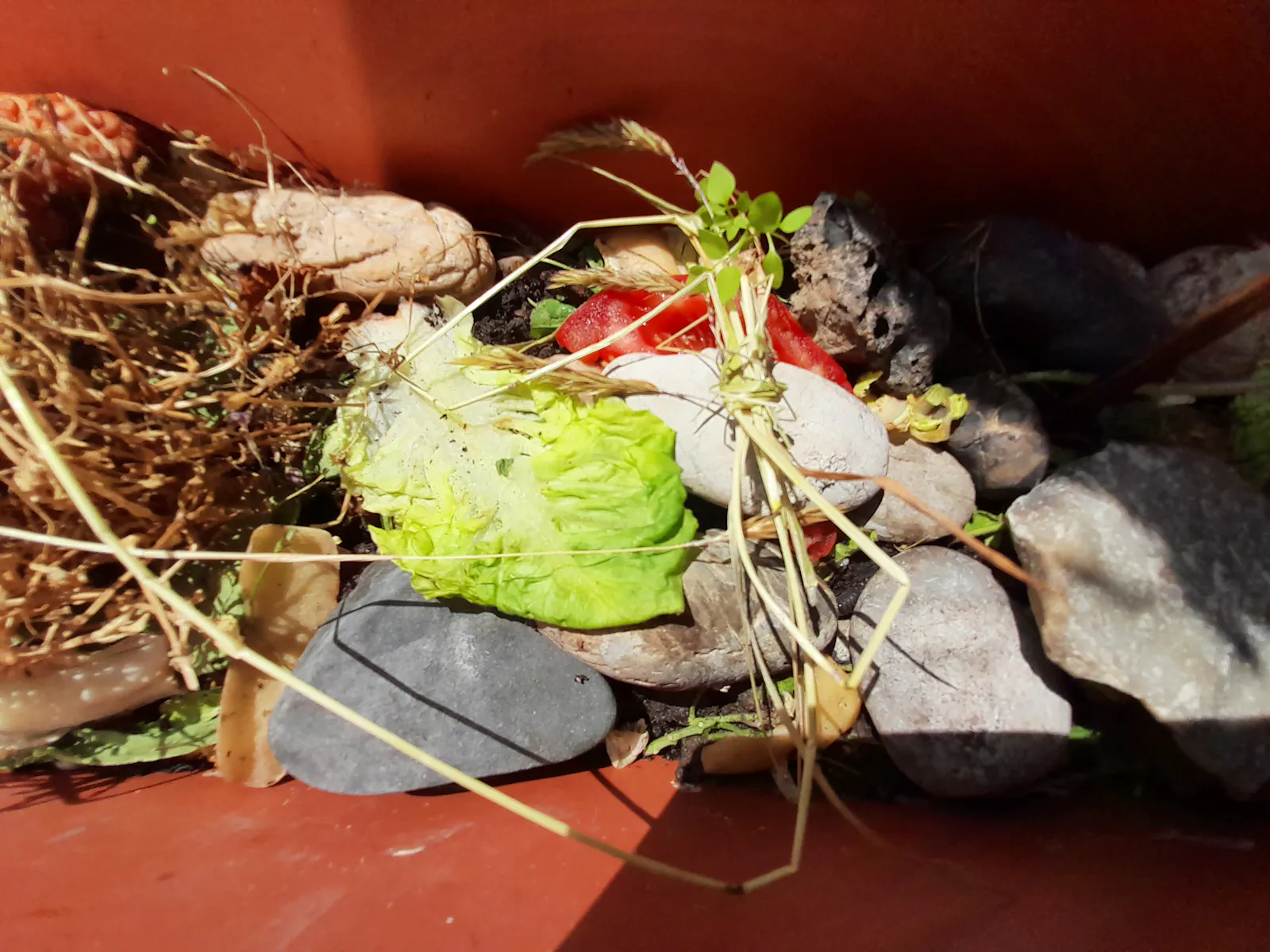
It may look “ugly” for your neighbours but this planet of small animals is easy to make if you have no compost heap to watch:
The open box should always be kept in the shade, not too hot, and always moist.
Don’t imprison any animals there and never ever put non-native animals in open boxes or your garden.
Do not fill the box completely to the brim with soil that is as natural and rich in humus as possible (not the sterile substrates from the hardware store). You can also take fresh humus directly from the compost.
Protect the surface from drying out with plant debris or loosely layered, flat stones.
Start with very small fresh plant debris like salad or rests of an apple.
When soil life increases, you need to add plant debris, just like in compost. Do not add food scraps!
The largest stones and some lettuce leaves can be your observation stations. Lift them up carefully!
Use the Tate’s Slow Looking Guide (Öffnet in neuem Fenster) for inspiration!
A magnifyer glass and/or macro lens can be very helpful.
I did that by accident, adding compost to my plants. A week later I could watch a colony of woodlice with babies, funny springtails (always to quick for photos), and some nematodes being crazy about mould. And the best: I re-discovered a tiny species of snails I had not seen for decades. Bigger soil life is quite hungry.
I have to feed the woodlice and snails with salad, tomatoes, apples, carrots or potato peels. They like the box so much that they proliferate. But when too many woodlice live in confined spaces, they can become cannibalistic. I therefore always remove a large portion of the soil and place it on a compost heap or in very shady, protected areas. I then replace it with new soil without any underground burrows.
And so you can watch or photograph what normally happens in a compost heap or in places with dead wood and plant debris in a garden. You can see live how all these tiny beings produce valuable humus. Slow Looking - you remember? Sometimes you can forget the time!
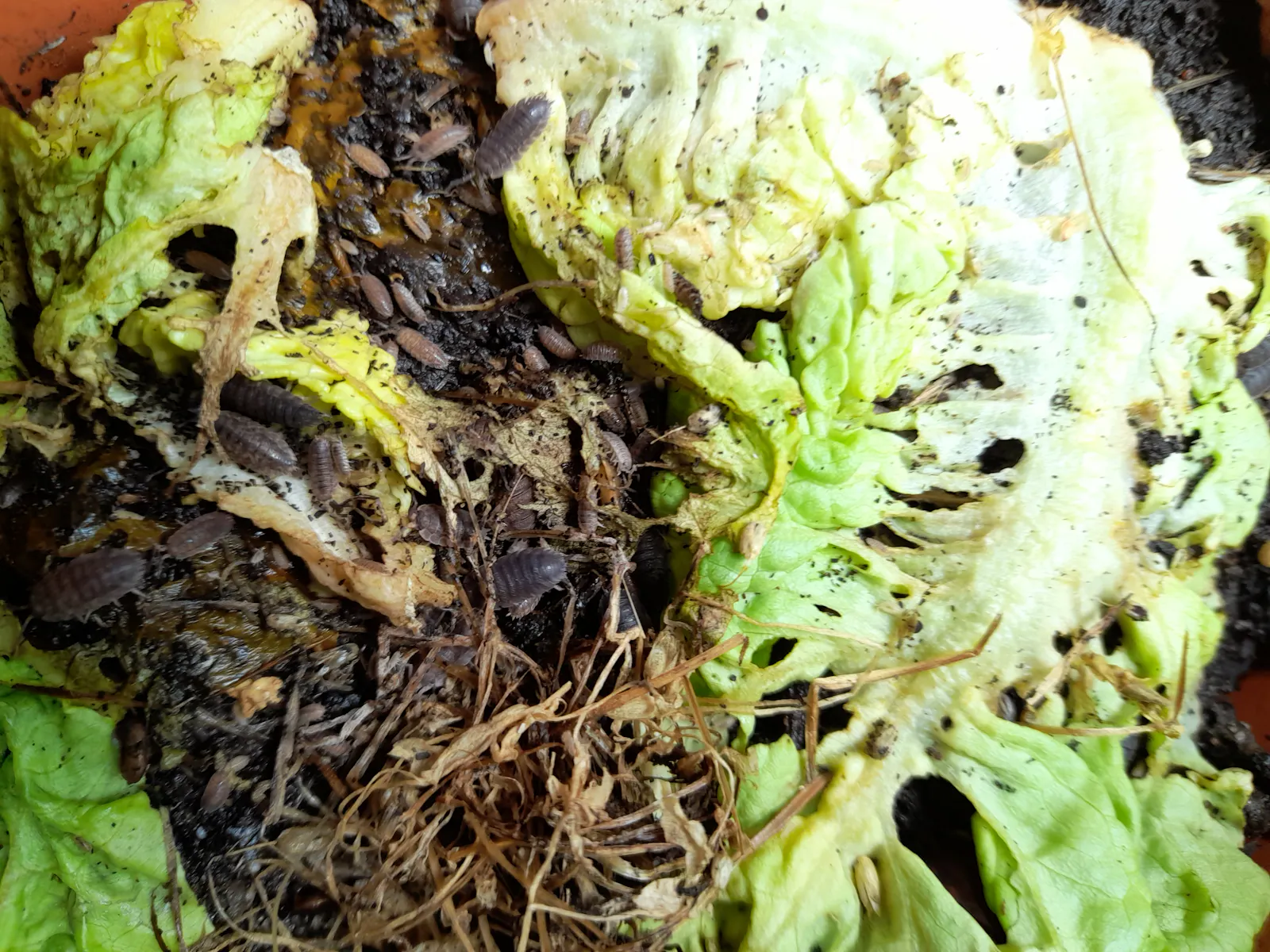
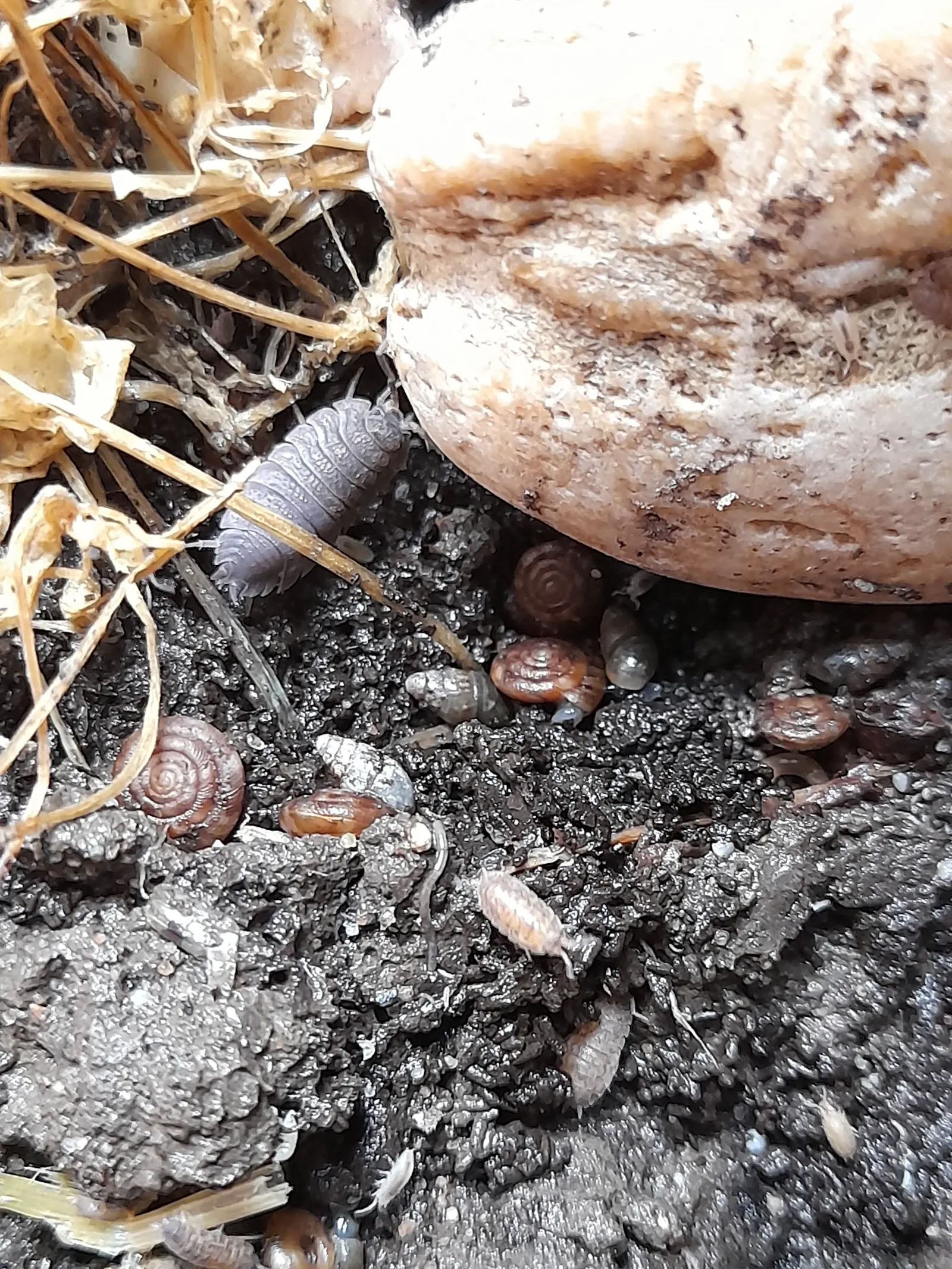
Are you curious? You can practise slow looking without any effort – a magnifying glass is your best friend. Take a look at crumbling walls or tree trunks in the city. When sitting at a street café, observe not only who is walking on the pavements, but also who is crawling in the cracks. Just stop on a hiking trail and observe a stone, a decaying tree, or a cushion of moss. And of course, I’ll show you more photos of soil life and nature!
If you like my work and a membership is too much for you: you can buy me a coffee! (Öffnet in neuem Fenster)
And please take my next stories as an excuse that I’m forced to pause my podcast again (but it will come back!) due to a chaotic, difficult situation in caring for someone, and preparing some changes in my life. I’m quite exhausted and write much quicker here!


